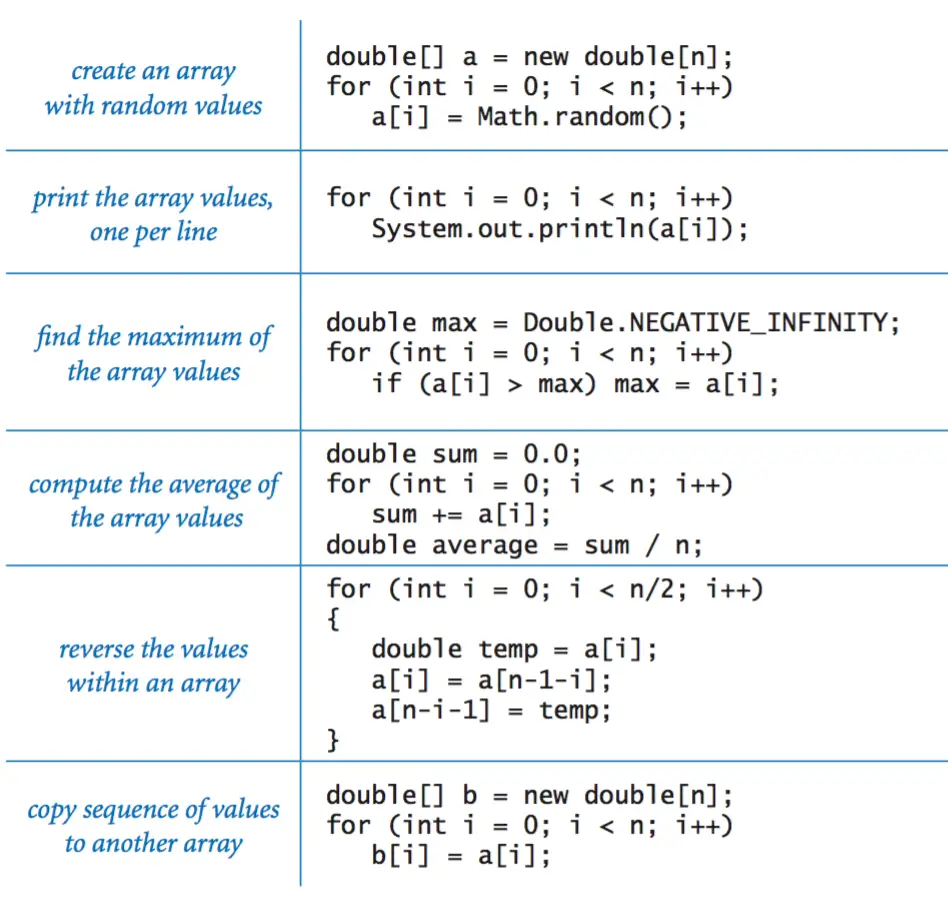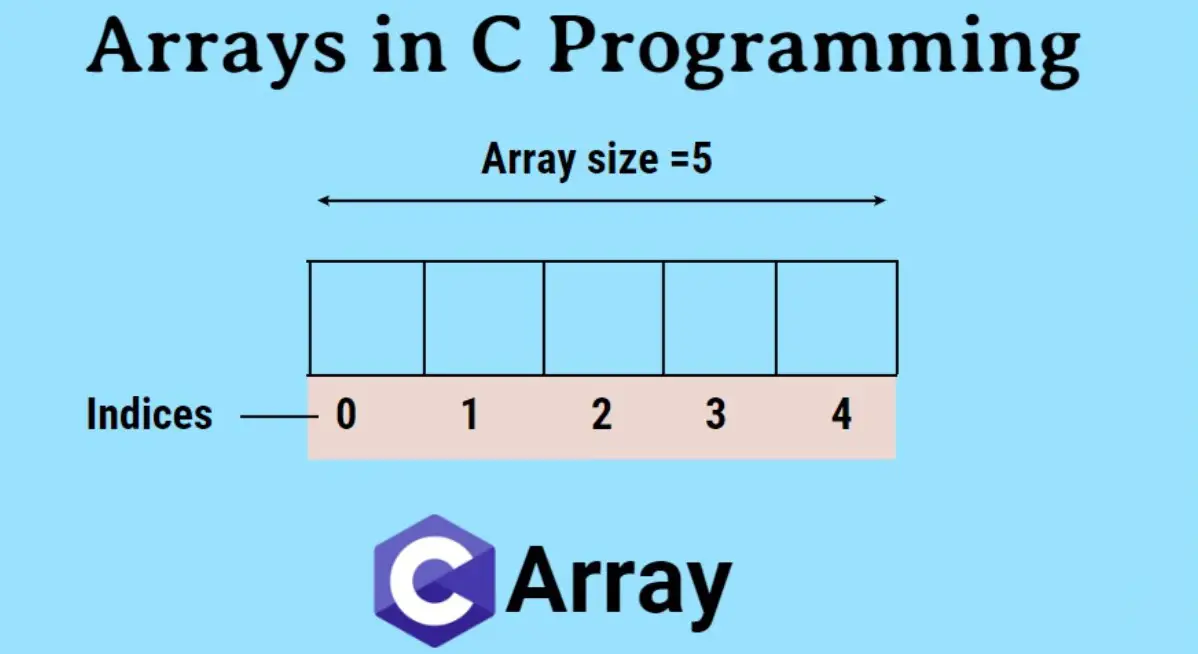Array Anomalies: Addressing Common Array Mistakes

Arrays are essential data structures used in programming to store a collection of elements. While they are versatile and widely used, working with arrays can also lead to errors if not handled carefully. This article discusses some common array anomalies and provides guidelines to address them effectively.

1. Out-of-Bounds Access:

Out-of-bounds access refers to accessing an element of an array using an index that is outside the valid range of the array. This can occur when the index is negative, greater than the length of the array, or both. Attempting to access elements outside the bounds can result in runtime errors and unpredictable behavior.
Solution:
To prevent out-of-bounds access, perform bounds checking before accessing array elements. Bounds checking involves verifying that the index is within the range of valid indices for the array. If the index is out of bounds, an appropriate action should be taken, such as throwing an exception or returning a default value.
2. Null Pointer Exceptions:
Null pointer exceptions occur when an attempt is made to access an element of an array that has not been initialized or has been assigned a null value. This can happen when uninitialized arrays are used or when array elements are explicitly set to null. Accessing a null array or a null element within an array can lead to runtime errors.
Solution:
To avoid null pointer exceptions, ensure that arrays are properly initialized and assigned valid values. Initialize arrays explicitly before using them, and check for null values before accessing array elements. If an array is expected to have null values, implement proper error handling or null checks to prevent runtime errors.
3. Array Aliasing:
Array aliasing occurs when two or more array references point to the same underlying array. This can lead to unexpected behavior and can make it difficult to track and manage changes to the array’s elements. Array aliasing can arise when multiple variables are assigned to the same array or when an array is passed by reference.
Solution:
To avoid array aliasing, use separate array variables to represent distinct data collections. When passing arrays to functions, consider using value passing instead of reference passing to create independent copies of the array. If array aliasing is unavoidable, keep track of all references to the array and ensure that changes made through one reference are propagated to all other references.
4. Incomplete Initialization:
Arrays that are partially initialized may lead to unpredictable behavior or undefined values in elements. Incomplete initialization can occur when only a subset of array elements is assigned values, leaving the remaining elements with default values. This can result in unexpected results when accessing or iterating over the array.
Solution:
To prevent incomplete initialization, ensure that all elements of an array are explicitly assigned values or initialized to default values. If an array is expected to have partially initialized elements, use appropriate error handling or provide default values to ensure predictable behavior.
5. Incorrect Array Size:
Using an incorrect array size can lead to insufficient storage or wasted memory space. If an array is too small, it may not be able to accommodate all the required elements. Conversely, if an array is too large, it may consume unnecessary memory and reduce performance.
Solution:
Determine the appropriate array size based on the expected number of elements. If the exact size is unknown, consider using dynamic arrays or resizable data structures to accommodate variable-length data. When working with fixed-size arrays, thoroughly consider the potential impact of choosing the wrong size and implement proper error handling to prevent unexpected behavior.
6. Invalid Data Types:
Arrays are strongly typed, meaning they can only hold elements of a specific data type. Attempting to store elements of an incorrect data type can lead to runtime errors or corruption of data. This can happen when assigning values that do not match the declared data type of the array or when mixing data types within the array.
Solution:
Ensure that the elements stored in an array are of the correct data type. Perform type checking before assigning values to array elements to prevent data corruption and runtime errors. If mixed data types are required, consider using generic data structures or implementing custom logic to handle the different data types.## Array Anomalies: Addressing Common Array Mistakes
Executive Summary
Arrays, fundamental data structures in programming, provide structured storage and efficient access to elements. However, their usage often presents challenges, leading to common errors that can compromise code quality and performance. This article identifies and addresses key array anomalies, empowering developers to overcome these hurdles and enhance their coding practices.
Introduction
Arrays play a crucial role in organizing and manipulating data, particularly in scenarios involving large collections. However, their implementation introduces complexities related to initialization, element access, and boundary conditions. This article delves into these common array anomalies, providing practical insights and best practices to mitigate potential pitfalls.
FAQs
Q: Why is my array not initialized correctly?
A: Ensure arrays are properly initialized with appropriate values. Neglecting initialization may result in unpredictable behavior or incorrect program execution.
Q: How can I avoid index out-of-bounds errors?
A: Always check array indices to prevent accessing elements beyond the defined bounds. Implementing bounds checking mechanisms safeguards against runtime errors and data corruption.
Q: How do I handle dynamic array resizing efficiently?
A: Utilize built-in resizing functions or implement custom memory management techniques to accommodate changes in array size. Inefficient resizing can lead to performance bottlenecks and memory-related issues.
Common Array Anomalies and Mitigation Strategies
1. Uninitialized Arrays
- Uninitialized Array Elements: Declare and initialize arrays with default values to prevent undefined behavior.
- Uninitialized Array Length: Set the array size explicitly during initialization to avoid unexpected results.
- Initializing Arrays to Null: Avoid initializing arrays to
null. Instead, use appropriate primitive values or object references.
2. Index Out-of-Bounds Errors
- Index Bounds Checking: Verify array indices fall within the defined range to prevent accessing non-existent elements.
- Array Length Validation: Check the array length before accessing elements to ensure indices are within bounds.
- Exception Handling: Implement exception handling mechanisms to catch index out-of-bounds errors and gracefully handle unexpected conditions.
3. Array Size Mismanagement
- Fixed Size Arrays: Consider using fixed-size arrays when the array size is known in advance to optimize memory usage.
- Dynamic Array Resizing: Use built-in resizing functions or implement custom memory management techniques to handle changes in array size efficiently.
- Pre-allocation of Memory: Pre-allocate sufficient memory for anticipated array growth to prevent frequent resizing and improve performance.
4. Array Assignment Anomalies
- Reference vs. Copy: Understand the difference between reference and copy semantics. Assigning one array to another creates a reference by default.
- Shallow vs. Deep Copy: When copying arrays with complex elements, consider using deep copy mechanisms to avoid shallow references.
- Array Cloning: Utilize cloning techniques to create independent copies of arrays, ensuring modifications to one do not affect the other.
5. Overlapping Arrays
- Overlapping Element Ranges: Identify overlapping ranges within arrays to prevent data corruption.
- Partial Overlaps: Be aware of partial overlaps where only a portion of one array overlaps another.
- Memory Overlap Issues: Understand memory allocation patterns and avoid overlapping arrays with different starting addresses.
Conclusion
Understanding and addressing array anomalies is essential for writing robust and efficient code. By proactively identifying and mitigating these common pitfalls, developers can enhance the reliability and performance of their applications. Embracing best practices, implementing safeguards, and leveraging appropriate techniques empowers programmers to harness the full potential of arrays and elevate their coding prowess.
Keywords
- Array Errors
- Array Initialization
- Index Bounds Checking
- Array Resizing
- Array Assignment
